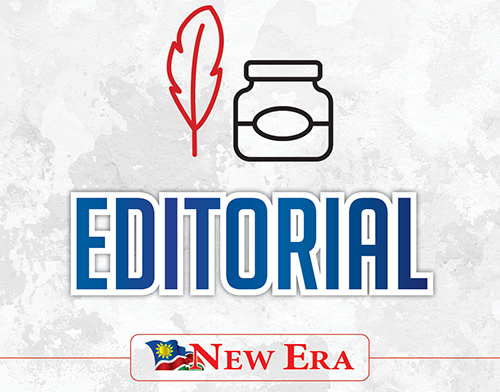When finance minister Iipumbu Shiimi tabled the mid-term budget review this week, one of the main considerations was how to minimise the impact of the escalating cost of living that continues to exert pressure on ordinary Namibians.
Many have struggled to keep head above water since depressed economic conditions from 2016.
The most notable improvements to social safety nets and adjustments to alleviate the cost of living pressure included an increase in the monthly conditional income grant (CIG) for former food bank recipients from N$500 to N$600; an increase of the disability grant for beneficiaries under the age of 18 from N$250 to N$1 300; an increase in the monthly old age grant, the disability grant and the orphan and vulnerable children grant by N$100, and an upward revision of expenditure ceilings to account for the 3% salary adjustment, which will cost the government N$1.3 billion.
These measures were made possible by improved revenue collection.
This pressure is mainly being applied by record inflation rates, the likes of which the domestic economy has not seen since 2017, and which continues to increase at an unprecedented pace on the global stage.
Namibia’s latest inflation (CPI) decelerated from 7.3% to 7.1% in August, indicating a peak in local inflation, but the consistent price increases in transport and food has left the average Namibian worse for wear.
Transport has been the main driver of domestic inflation, as it accounted for almost 40% of September’s overall inflation and actually increased to close to 20% on an annual basis.
This skyrocketing inflation was aggravated by Wednesday’s increase of the repo rate by 75 basis points, which will further add pressure on consumers and their abilities to honour loan obligations.
However, there is light at the end of the tunnel as industry insiders expect persistent food price increases to peter out, as global edible oil prices have started falling in recent weeks, mainly due to an uptick in global supply.
This drop in prices should filter through into local markets over time.
However, as Shiimi pointed out on Tuesday, the lingering effects of the pandemic, coupled with economic consequences of the Russia-Ukraine conflict, as well as elevated global inflation, means risks remain elevated for the Namibian economy.
As such, government’s primary focus remains to shield vulnerable Namibians as much as possible from the devastating impact of rising international energy and food prices.
Meanwhile, focus on these mentioned priorities have been enabled by the State’s improved revenue collection, which stood at N$30.4 billion at the end of September 2022, representing 51% of revenue projections, tabled in the February budget – and which are 3% higher than Namibia’s historical mid-year collection rate.
In total, expected revenue for the current financial year have been revised upwards by N$4.4 billion – from N$59.7 billion to N$64.1 billion or close to 8% year-on-year growth in revenue from the previous year.
Over the medium-term, domestic revenue is forecast to grow by an average of 7.4% to reach about N$78.3 billion by 2025/26 financial year.
The improved revenue collection was driven by better-than-expected individual income taxes as well as robust diamond mining and strong corporate tax collections.
Additionally, tax administration reforms are finally paying off through improved efficiency in tax collection.
Furthermore, additional avenues to maintain social cohesion and promote much-needed growth is to contain the country’s borrowing costs and to prioritise investment in infrastructure, through the development budget; to advocate for more skills development and to enforce enabling-business incentives to stimulate production of goods and services for local consumption and export.
This would further entrench the promise and impetus of addressing frustrations and interventions around youth unemployment and youth empowerment.


